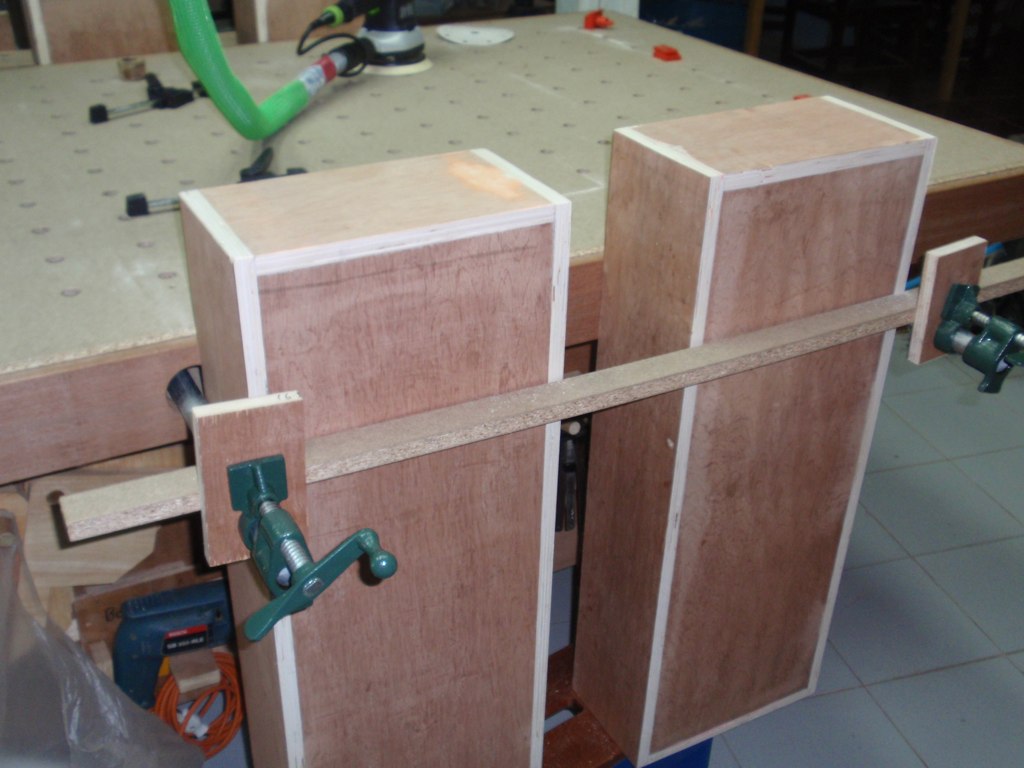Ateallthepies
Established Member
Thought it was about time I posted some pics of my workshop. It is a bit cosy and will be even more so as soon as I get the funds to buy a decent floor standing jointer.



Now here are a couple more mods to my TS-200. I made up an out-feed table out of some 12mm ply and used a couple of door hinges to attach it to the saw.
Also I dug out my Triton router and table that has been hidden away unused since I bought it 3-4 years ago. I used some angle iron to attach it to the left hand side of the saw so I can use it as left hand side table when the fence is removed.



I haven't quite figured out how to keep the out-feed table in the raised position without using a separate roller stand as in the pics but I'm sure it will involve a bit of angle iron bolted on somehow?
When using the saw I realized that turning it off was a fiddle and my attention is taken away from the moving saw to switch it off. After thinking about it and seeing somebodies video on the same subject, I made a hinged swing arm that is operated by my knee. It was made from some scrap wood, a hinge and a foam drill sanding thingamyjig! Works very well and keeps my attention on the moving saw.


One question I would like to ask about the router table, how much table is needed in front of the bit? In my pics you can see a bit of MDF in a frame that is in front of the bit. I would like to saw off this frame to save some space but this will only leave about 5" of table. How much table is needed for a hobbiest like me?
Thanks and hope you like,
Steve.



Now here are a couple more mods to my TS-200. I made up an out-feed table out of some 12mm ply and used a couple of door hinges to attach it to the saw.
Also I dug out my Triton router and table that has been hidden away unused since I bought it 3-4 years ago. I used some angle iron to attach it to the left hand side of the saw so I can use it as left hand side table when the fence is removed.



I haven't quite figured out how to keep the out-feed table in the raised position without using a separate roller stand as in the pics but I'm sure it will involve a bit of angle iron bolted on somehow?
When using the saw I realized that turning it off was a fiddle and my attention is taken away from the moving saw to switch it off. After thinking about it and seeing somebodies video on the same subject, I made a hinged swing arm that is operated by my knee. It was made from some scrap wood, a hinge and a foam drill sanding thingamyjig! Works very well and keeps my attention on the moving saw.


One question I would like to ask about the router table, how much table is needed in front of the bit? In my pics you can see a bit of MDF in a frame that is in front of the bit. I would like to saw off this frame to save some space but this will only leave about 5" of table. How much table is needed for a hobbiest like me?
Thanks and hope you like,
Steve.
















